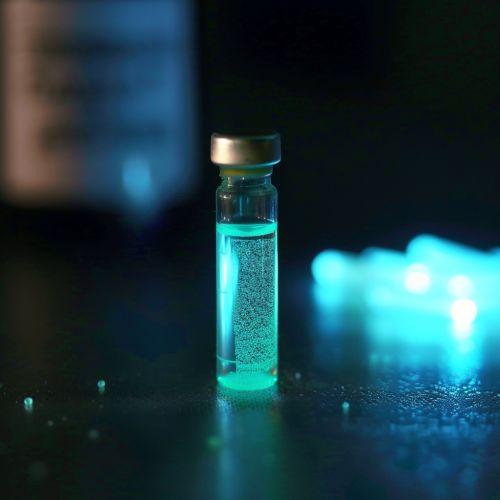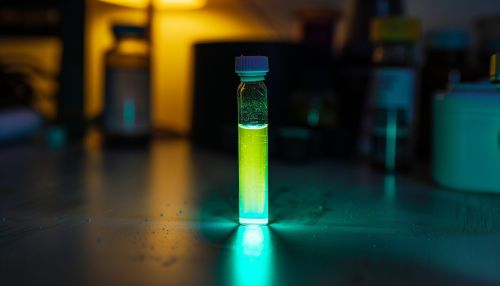Radium chloride
Introduction
Radium chloride, also known as radium dichloride, is a chemical compound that was historically used in medicine and industry. It is one of the most stable radium salts and was the first radium compound isolated in a pure state. Radium chloride is a white crystalline solid that is highly radioactive and has a glowing blue-green color in the dark.
History
The discovery of radium chloride is closely linked to the history of radioactivity. In 1898, Marie and Pierre Curie discovered radium by extracting it from uraninite (or pitchblende), a uranium ore. The Curies first isolated radium as radium chloride, which they derived from the barium chloride fraction by fractional crystallization. The glowing green salt was then processed to produce pure radium metal.
Chemical Properties
Radium chloride is a salt composed of radium and chlorine atoms. It has the chemical formula RaCl2. As a radium salt, it is highly radioactive and glows blue-green in the dark due to radium's intense radioactivity. Radium chloride is soluble in water and alcohol. It decomposes at high temperatures to form radium monochloride (RaCl) and chlorine gas.


Physical Properties
Radium chloride is a white crystalline solid at room temperature. It has a melting point of 700 °C and a boiling point of 1500 °C. The compound is denser than water, with a density of 4.8 g/cm³. It is one of the most stable radium salts, but it is still highly radioactive. The radioactivity of radium chloride is primarily due to the radium-226 isotope, which decays to form radon gas.
Production
The production of radium chloride involves the processing of uranium or thorium ores. The ore is first crushed and then treated with sulfuric acid to dissolve the radium. The resulting solution is then treated with barium chloride to precipitate out the radium as radium chloride. This precipitate is then purified through recrystallization.
Uses
Historically, radium chloride was used in medicine and industry. It was used in the treatment of cancer, particularly in the form of radium needles for brachytherapy. However, due to the high radioactivity and associated health risks, the use of radium chloride in medicine has been largely discontinued. In industry, radium chloride was used in the production of self-luminous paints for watches, aircraft instrument dials, and other equipment. However, this use has also been largely discontinued due to health concerns.
Health Effects
Exposure to radium chloride can have serious health effects due to its high radioactivity. When ingested or inhaled, radium chloride can cause cancer, particularly bone cancer, as radium tends to accumulate in the bones. Long-term exposure to radium chloride can also cause anemia, cataracts, fractured teeth, and death. Proper safety measures should be taken when handling radium chloride to minimize exposure to its radioactivity.
Disposal
Due to its high radioactivity, radium chloride must be disposed of carefully. It is classified as a radioactive waste and must be handled according to the regulations for radioactive waste disposal. This typically involves containment in a suitable container, followed by burial in a licensed radioactive waste disposal site.
